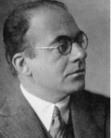Name George Dangerfield | Role Journalist | |
 | ||
Books The Strange Death of Liberal England Awards Nominations National Book Award for Nonfiction | ||
LCTM2011 George Dangerfield
George Bubb Dangerfield (October 28, 1904 in Newbury, Berkshire – December 27, 1986 in Santa Barbara, California) was an English-American journalist, historian, and the literary editor of Vanity Fair from 1933 to 1935. He is known primarily for his book The Strange Death of Liberal England (1935), a study of the rapid decline of the Liberal Party in the United Kingdom in the years before World War I, and The Era of Good Feelings, which won the 1953 Pulitzer Prize for History.
Contents
Biography
Dangerfield was born in Berkshire, England, and educated at Forest School, Walthamstow (then in Essex). His first memory, he wrote in his thirties, was "of being held up to a window and shown Halley's Comet" in 1910. In 1927 he received his B.A. from Hertford College, Oxford. In 1930 he moved to the United States, married Mary Lou Schott in 1941, and became an American citizen in 1943.
Dangerfield's The Strange Death of Liberal England was not given much attention by academic historians when it first appeared in 1935, but has gained admirers over the years because of its lively style and trenchant analysis. It remains one of the best accounts of the failure of the Liberals to deal effectively with increasingly vehement demands from Irish Unionists and Irish Nationalists, industrial workers, and suffragettes. In 1941 Dangerfield published a work on the early life of Edward VII, Victoria's Heir: The Education of a Prince.
After serving in the United States Army with the 102nd Infantry Division during World War II, he returned to the study of history and wrote The Era of Good Feelings (1952), a history of the period of the same name between the presidencies of Thomas Jefferson and Andrew Jackson, covering from the start of the War of 1812 to the start of Jackson's administration on March 4, 1829. Dangerfield's book characterizes the period as constituting the transition "from the great dictum that central government is best when it governs least to the great dictum that central government must sometimes intervene strongly on behalf of the weak and the oppressed and the exploited." The book won the 1953 Bancroft Prize and the 1953 Pulitzer Prize for History. He later followed up his work on this period in American history with The Awakening of American Nationalism: 1815-1828 (1965), an installment in Harper and Row's "The New American Nation" series of histories.
A Guggenheim Fellowship in 1970 allowed Dangerfield to return to Europe for research. In the UK and in Ireland, he collected material for his last book, The Damnable Question: A Study of Anglo-Irish Relations, which was a finalist in 1976 for the National Book Critics Circle Award in General Nonfiction.
Death
He died of leukemia in Santa Barbara, California, where he had taught for a few years at the University of California, Santa Barbara. He was the father of two daughters, Mary Jo Lewis and Hilary Fabre, and a son, Anthony.
